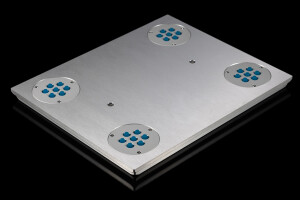A while ago I was asked which brand that hasn’t yet been featured at this site I’d like to cover the most, and fully addressing that question took as long as it takes to say the word ‘Nagra’. This perfect reply served me well for many years, but just recently Intrada’s founder Michał Gogulski ruined it by kindly sending Nagra Classic INT my way. Aw shucks.
Introduction
Although I’ve been aware of Nagra’s existence for more than a decade, it became the primary target on my radar in early 2016 when, at Marek’s place, I was introduced to its Classic AMP fronted by Jazz tube preamp. The man had to help a freshman not yet used to electronics this costly – that would be me back then – where exactly this Swiss set scored more points than the FirstWatt F7, but several back and forths later I couldn’t argue with results published here. The memorable lesson that followed was twofold; in spite of compact size Nagra’s hardware sounded big and posh to prove me that less can be more, and it educated me well what the word ‘resolution’ truly means. Past this experience my mild curiosity about this brand had flourished into proper interest fueled by contents of its rooms at various shows. Fast forward six years and presto, the opportunity to host a Nagra kit within my own four walls finally revealed itself. Huzzah!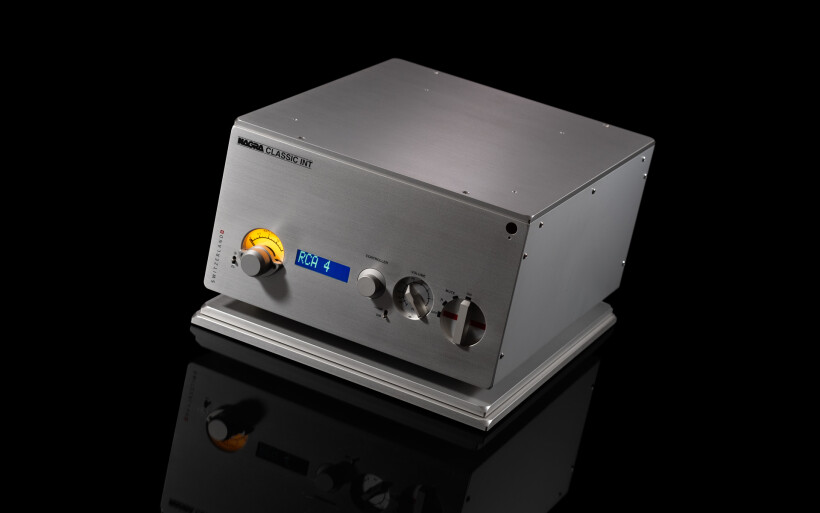 Penning anything new about Nagra seems nigh impossible given its well-established legendary status and extensive press coverage. But since this review opens up its chapter at this site, getting at the very least historic essentials out of the way is mandatory prior to carrying on. It all started from a gifted engineer of Polish origin – Stefan Kudelski (27 August 1931 – 26 January 2013) – who in 1951 in Switzerland developed the first ever self-contained open-reel recorder – Nagra I – released under the Nagra banner and very successful. Models Nagra II and III followed respectively in the mid and late ‘50s, while the latter became a major hit in radio broadcasting and cinematography. The company expanded and its tape recorders known for reliability, robustness and cutting-edge tech were the industry’s standard for motion picture and single-camera TV production until the ‘90s. For his work Stefan Kudelski was awarded with three Academy Awards, two Emmys plus multiple other honors. Today the Kudelski Group based in Switzerland’s Cheseaux-sur-Lausanne has his son André at its steering wheel, and is a massive organization that hires nearly 4’000 employees spread across four main hi-tech branches; Digital Television, Cyber Security, IoT and Public Access.
Penning anything new about Nagra seems nigh impossible given its well-established legendary status and extensive press coverage. But since this review opens up its chapter at this site, getting at the very least historic essentials out of the way is mandatory prior to carrying on. It all started from a gifted engineer of Polish origin – Stefan Kudelski (27 August 1931 – 26 January 2013) – who in 1951 in Switzerland developed the first ever self-contained open-reel recorder – Nagra I – released under the Nagra banner and very successful. Models Nagra II and III followed respectively in the mid and late ‘50s, while the latter became a major hit in radio broadcasting and cinematography. The company expanded and its tape recorders known for reliability, robustness and cutting-edge tech were the industry’s standard for motion picture and single-camera TV production until the ‘90s. For his work Stefan Kudelski was awarded with three Academy Awards, two Emmys plus multiple other honors. Today the Kudelski Group based in Switzerland’s Cheseaux-sur-Lausanne has his son André at its steering wheel, and is a massive organization that hires nearly 4’000 employees spread across four main hi-tech branches; Digital Television, Cyber Security, IoT and Public Access.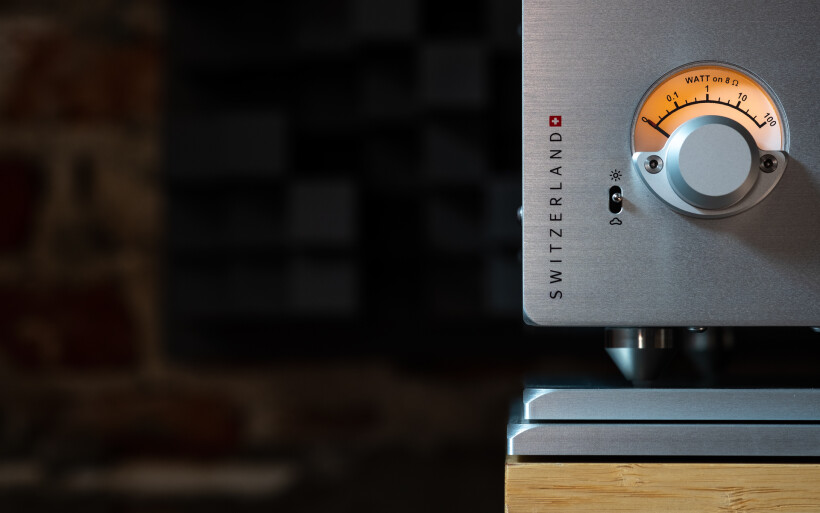 The Kudelski Group’s audio division launched its first home enthusiast product – Nagra PL-P class A tube pre/phono – in 1997 and many more followed over the next decade. In early 2012 this subsidiary was no more, just to reborn shortly after as an independently owned entity named Audio Technology Switzerland that remained in the Kudelski family. Stefan’s daughters Marguerite and Irène with her husband Pascal Mauroux became the new shareholders with the latter also as the CEO. The list of key individuals wouldn’t be complete without mentioning my contact Matthieu Latour (Director of Marketing), Philippe Chambon (R&D Product Manager) and Thierry Frank (R&D Head). Their operation located in Romanel-sur-Lausanne neighbors with Kudelski Groups’s HQ less than three kilometers away, and I imagine that once in a while this Sauron’s Eye peeks out to admire the view behind the Black Gate.
The Kudelski Group’s audio division launched its first home enthusiast product – Nagra PL-P class A tube pre/phono – in 1997 and many more followed over the next decade. In early 2012 this subsidiary was no more, just to reborn shortly after as an independently owned entity named Audio Technology Switzerland that remained in the Kudelski family. Stefan’s daughters Marguerite and Irène with her husband Pascal Mauroux became the new shareholders with the latter also as the CEO. The list of key individuals wouldn’t be complete without mentioning my contact Matthieu Latour (Director of Marketing), Philippe Chambon (R&D Product Manager) and Thierry Frank (R&D Head). Their operation located in Romanel-sur-Lausanne neighbors with Kudelski Groups’s HQ less than three kilometers away, and I imagine that once in a while this Sauron’s Eye peeks out to admire the view behind the Black Gate.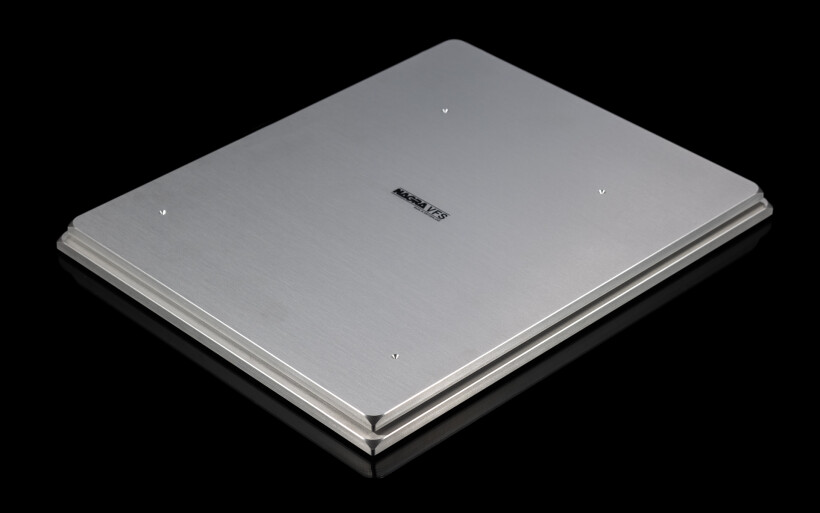 The brand Nagra under Audio Technology Switzerland’s umbrella comprises of product groups meant for hi-fi, pro audio, and security and law enforcement. It’s very clear where belongs its hardware as audiophiles know it, and along with Marguerite and Pascal’s acquisition this catalogue underwent a major overhaul to now divide into two main tiers; HD and Classic. The latest and top of the line former includes HD AMP monos, HD DAC X and HD PREAMP. If you’re after Nagra’s best and prices north of €60’000 per component don’t seem scary, that’s the territory you’d want to investigate. Meanwhile, the substantially more affordable Classic lineup contains everything else including today’s hero, designed as HD AMP’s half-sized descendant released in 2016. Considering how the industry works this should be an oldtimer by now, but seeing it as such would be criminally wrong. Although at the camp Nagra time passes by slowly and releasing new models every year simply isn’t what they do, it most certainly doesn’t stand still. Their Classic INT clearly shows why, Srajan’s take on it you’ll find here, and now it’s my turn. Enjoy!
The brand Nagra under Audio Technology Switzerland’s umbrella comprises of product groups meant for hi-fi, pro audio, and security and law enforcement. It’s very clear where belongs its hardware as audiophiles know it, and along with Marguerite and Pascal’s acquisition this catalogue underwent a major overhaul to now divide into two main tiers; HD and Classic. The latest and top of the line former includes HD AMP monos, HD DAC X and HD PREAMP. If you’re after Nagra’s best and prices north of €60’000 per component don’t seem scary, that’s the territory you’d want to investigate. Meanwhile, the substantially more affordable Classic lineup contains everything else including today’s hero, designed as HD AMP’s half-sized descendant released in 2016. Considering how the industry works this should be an oldtimer by now, but seeing it as such would be criminally wrong. Although at the camp Nagra time passes by slowly and releasing new models every year simply isn’t what they do, it most certainly doesn’t stand still. Their Classic INT clearly shows why, Srajan’s take on it you’ll find here, and now it’s my turn. Enjoy!
Build
A large standard issue cardboard housed a smaller white Nagra-branded box that had its main content inside a translucent bag nested in-between two foam forms. The upper piece was cut precisely to contain all accessories; a pair of gloves, throwaway power cord, owner’s manual, QC/performance report and remote controller. This ergonomic plastic wand with rubber buttons felt substantial on hand and did everything it should, so no wonder that many manufacturers use it. I’m aware of Soulution, Reimyo and Crayon, but most likely there are many more.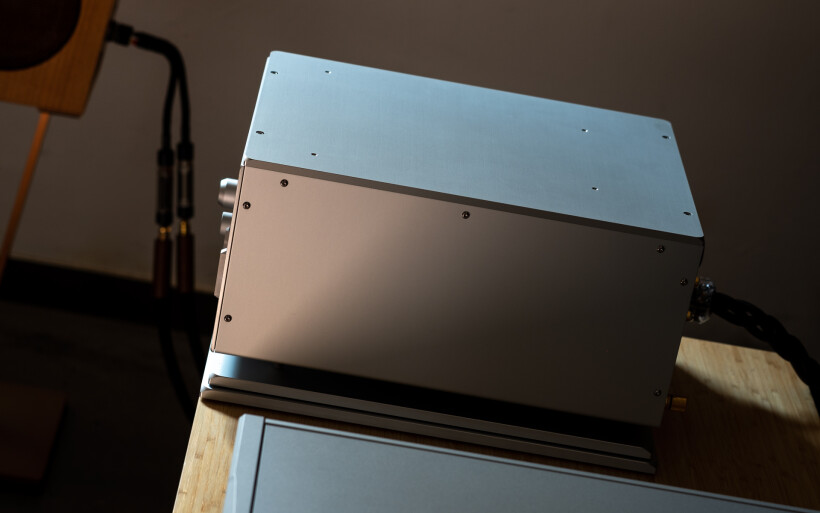 Nagra Classic INT is a fully analog transistor affair that integrates a stereo power amp and volume control inside one enclosure. This basic 2-in-1 functionality also determines what’s off the menu; a DAC, streamer, wireless, phono and tubes. The Swiss lineup can externally cover three these bases and maintain house sound, however. The simple albeit costly recipe would include its Classic Tube DAC, Classic PHONO and Classic AMP that’s Classic INT minus volume regulation, so for the remaining two utilities one would have to venture beyond Nagra’s catalog still. Although its engineers are fluent in analog, digital, transistors and tubes, they don’t pursue trends and leave über do-it-all amps to others. This report’s classic in every sense of that word merely points that out.
Nagra Classic INT is a fully analog transistor affair that integrates a stereo power amp and volume control inside one enclosure. This basic 2-in-1 functionality also determines what’s off the menu; a DAC, streamer, wireless, phono and tubes. The Swiss lineup can externally cover three these bases and maintain house sound, however. The simple albeit costly recipe would include its Classic Tube DAC, Classic PHONO and Classic AMP that’s Classic INT minus volume regulation, so for the remaining two utilities one would have to venture beyond Nagra’s catalog still. Although its engineers are fluent in analog, digital, transistors and tubes, they don’t pursue trends and leave über do-it-all amps to others. This report’s classic in every sense of that word merely points that out.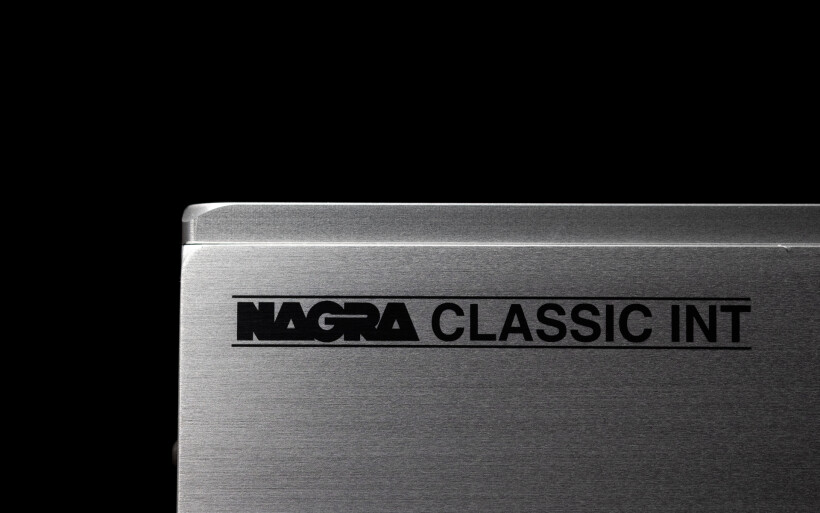 Nagra Classic INT measures (W x D x H) 277 x 350 x 165mm and weighs 18kg so is one hefty sucker to lift and carry around, albeit delightfully compact for what it is and very pretty to look at. This class AB push-pull design outputs 100/200wpc into 8/4Ω respectively and remains in pure class A up to 10 watts. Further specs list 10Hz – 80kHz bandwidth at 0/-3dB, crosstalk below 70dB, A-weighted S/NR of 110dB, 100KΩ/60mΩ i/o impedance and THD+N below 0.05% at full blast. Power consumption tops at 400W and drops below 1W in idle, and the operating voltage range spans wide from 90 to 264V. The Swiss-made badge is included in that package, but that should be crystal by now.
Nagra Classic INT measures (W x D x H) 277 x 350 x 165mm and weighs 18kg so is one hefty sucker to lift and carry around, albeit delightfully compact for what it is and very pretty to look at. This class AB push-pull design outputs 100/200wpc into 8/4Ω respectively and remains in pure class A up to 10 watts. Further specs list 10Hz – 80kHz bandwidth at 0/-3dB, crosstalk below 70dB, A-weighted S/NR of 110dB, 100KΩ/60mΩ i/o impedance and THD+N below 0.05% at full blast. Power consumption tops at 400W and drops below 1W in idle, and the operating voltage range spans wide from 90 to 264V. The Swiss-made badge is included in that package, but that should be crystal by now.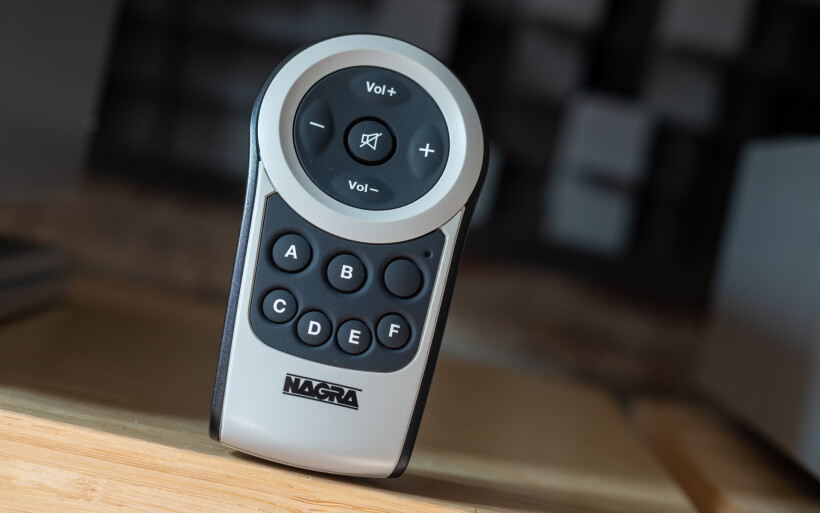 Nagra’s current portfolio communicates that iconic aesthetics and legacy associated with its designs from the ‘50s have been preserved. Classic INT doesn’t shy away from these deep legendary roots yet looks refreshingly modern in a way that tastefully unifies old and new. Its masterful machining and assembly spell out mad attention to tiniest details and precision level from the very top. Unsurprisingly photos scream luxury though not how buttoned up it really is, or at least I don’t think they do. For that one would have to toy with Classic INT’s knobs, look at its moving dials, flip switches, press toggles, see up close how evenly allocated all its intricacies are, and simply experience it the flesh. Over the years I’ve seen many expertly made products but none that was this polished.
Nagra’s current portfolio communicates that iconic aesthetics and legacy associated with its designs from the ‘50s have been preserved. Classic INT doesn’t shy away from these deep legendary roots yet looks refreshingly modern in a way that tastefully unifies old and new. Its masterful machining and assembly spell out mad attention to tiniest details and precision level from the very top. Unsurprisingly photos scream luxury though not how buttoned up it really is, or at least I don’t think they do. For that one would have to toy with Classic INT’s knobs, look at its moving dials, flip switches, press toggles, see up close how evenly allocated all its intricacies are, and simply experience it the flesh. Over the years I’ve seen many expertly made products but none that was this polished. Today’s fully aluminium innocent frame on width and depth follows the strict sizing paradigm originally established by Nagra HD DAC. Classic INT thus looks the way it does because it could only grow taller to contain all internals and secure enough dissipation surface for twice the output power versus its predecessor MSA. The lower side of its forehead features a 7-stepped spring-loaded toggle that controls how dim/bright are Nagra’s signature orange dual-needle modulometer and small deep blue display just next to it. A controller a hair further to the right integrates a pushbutton and allows one to cycle through options in the menu. Just next to it sit a volume regulator and master switch inside their own round cavities with white dials. A 0/+12dB preamp gain knob in that area also engages respectively lower/higher feedback, and black acrylic in the upper right corner hides an IR eye. The entire view is asymmetrical, multi-colored and anything but boring.
Today’s fully aluminium innocent frame on width and depth follows the strict sizing paradigm originally established by Nagra HD DAC. Classic INT thus looks the way it does because it could only grow taller to contain all internals and secure enough dissipation surface for twice the output power versus its predecessor MSA. The lower side of its forehead features a 7-stepped spring-loaded toggle that controls how dim/bright are Nagra’s signature orange dual-needle modulometer and small deep blue display just next to it. A controller a hair further to the right integrates a pushbutton and allows one to cycle through options in the menu. Just next to it sit a volume regulator and master switch inside their own round cavities with white dials. A 0/+12dB preamp gain knob in that area also engages respectively lower/higher feedback, and black acrylic in the upper right corner hides an IR eye. The entire view is asymmetrical, multi-colored and anything but boring.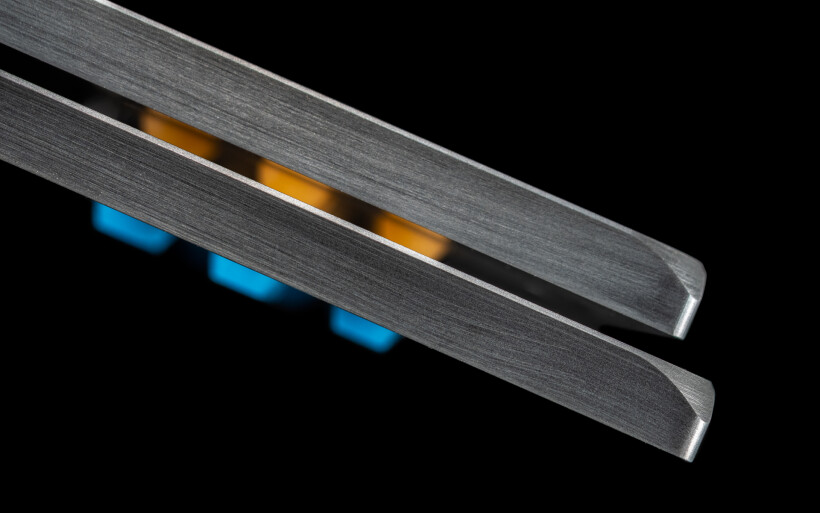 Classic INT’s business end features multiple perforations up high, while down below openings just for bananas/BFAs sit in-between Cardas’ CPBP rhodium-plated terminals that don’t accept these. Although universal binding posts would do the same at one go, Nagra Classic AMP’s white-collared outputs upon bridging make it twice as powerful mono deck, so its integrated sibling released later on could have these either removed or meaningfully repurposed. The Swiss engineers opted for the latter and what they did is quite clever. Inputs XLR (2/10V in normal/pro setting) and high-sensitivity RCA (2/3V in normal/high setting) are subject to tiny voltage levers just next to them, but not 3x regular 2V RCAs that follow. Below them there’s a grounding post, trigger i/o and fused IEC inlet with the main on/off switch.
Classic INT’s business end features multiple perforations up high, while down below openings just for bananas/BFAs sit in-between Cardas’ CPBP rhodium-plated terminals that don’t accept these. Although universal binding posts would do the same at one go, Nagra Classic AMP’s white-collared outputs upon bridging make it twice as powerful mono deck, so its integrated sibling released later on could have these either removed or meaningfully repurposed. The Swiss engineers opted for the latter and what they did is quite clever. Inputs XLR (2/10V in normal/pro setting) and high-sensitivity RCA (2/3V in normal/high setting) are subject to tiny voltage levers just next to them, but not 3x regular 2V RCAs that follow. Below them there’s a grounding post, trigger i/o and fused IEC inlet with the main on/off switch.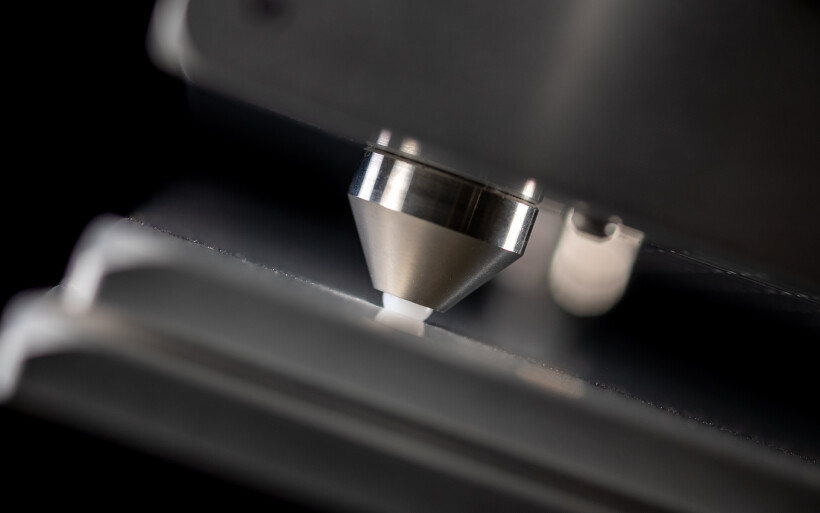 Just as photos can’t fully grasp Classic INT’s premium feel, they also don’t show its smarts. Its auto-sensing input board engages standby after 15 minutes without signal. The toggle that dims/brightens VU-meter and LCD includes the ‘off’ setting and after shutdown remembers its position. The master knob’s ‘R’ allows for powering on/off the product remotely via RC’s blank button. Recessed sensitivity switches on the back purposely take some effort to flip, to prevent accidental changes. The OS includes Eng/Fr languages, monitors temperature (41°C by default) and allows for naming inputs. The display also shows usage in hours, firmware version, serial number and the word ‘SAT’ for saturation that warns about clipping and suggests lowering volume. By going from orange to proper red today’s modulometer indicates engaged protection against overheating, short-circuit, clipping above 1s or DC in excess of +/-2.5V. Four cavities on Classic INT’s top accommodate other Nagra products, and its easily detachable pointy footers invite one to experiment with various decouplers.
Just as photos can’t fully grasp Classic INT’s premium feel, they also don’t show its smarts. Its auto-sensing input board engages standby after 15 minutes without signal. The toggle that dims/brightens VU-meter and LCD includes the ‘off’ setting and after shutdown remembers its position. The master knob’s ‘R’ allows for powering on/off the product remotely via RC’s blank button. Recessed sensitivity switches on the back purposely take some effort to flip, to prevent accidental changes. The OS includes Eng/Fr languages, monitors temperature (41°C by default) and allows for naming inputs. The display also shows usage in hours, firmware version, serial number and the word ‘SAT’ for saturation that warns about clipping and suggests lowering volume. By going from orange to proper red today’s modulometer indicates engaged protection against overheating, short-circuit, clipping above 1s or DC in excess of +/-2.5V. Four cavities on Classic INT’s top accommodate other Nagra products, and its easily detachable pointy footers invite one to experiment with various decouplers.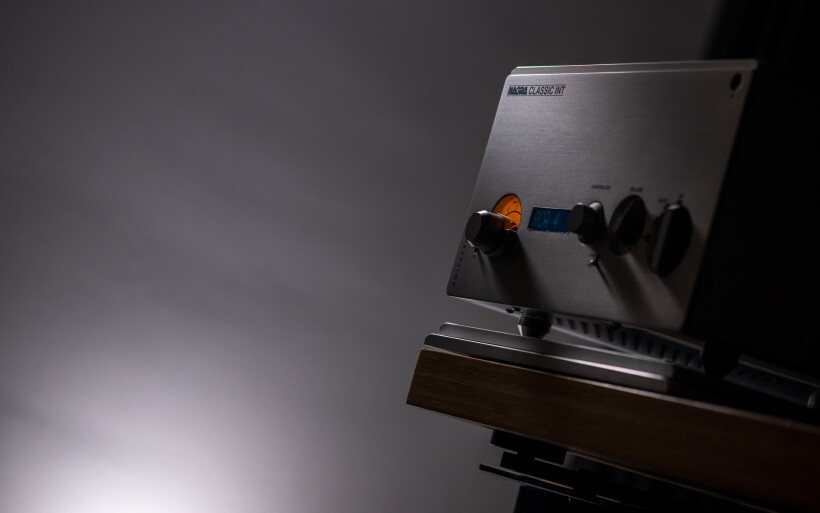 As far as its externals go Nagra Classic INT radically differs from most integrated machines I’ve seen, but even more so upon taking a peek inside. Its cheeks and underbelly form one U-shaped piece that goes off, but not a massive heat sink that forms its hood. The key PCB that mounts to it hangs like a fruit from a tree, and past getting down to internals it becomes clear how thick that surface and front panel really are. Noctua’s 120mm fan installed on the bottom blows hot air outside to improve heat dissipation and highlights out-of-the-box thinking. My stationary PC geared for benchmarks and heavy-duty tasks houses four these items well-known for silent MO, effectiveness and longevity, so seeing one in an audiophile product made me smile and nod in approval. Classic INT’s fully modular assembly allows the Swiss team to quickly access, diagnose and swap any faulty component, but I imagine that they don’t do that often.
As far as its externals go Nagra Classic INT radically differs from most integrated machines I’ve seen, but even more so upon taking a peek inside. Its cheeks and underbelly form one U-shaped piece that goes off, but not a massive heat sink that forms its hood. The key PCB that mounts to it hangs like a fruit from a tree, and past getting down to internals it becomes clear how thick that surface and front panel really are. Noctua’s 120mm fan installed on the bottom blows hot air outside to improve heat dissipation and highlights out-of-the-box thinking. My stationary PC geared for benchmarks and heavy-duty tasks houses four these items well-known for silent MO, effectiveness and longevity, so seeing one in an audiophile product made me smile and nod in approval. Classic INT’s fully modular assembly allows the Swiss team to quickly access, diagnose and swap any faulty component, but I imagine that they don’t do that often.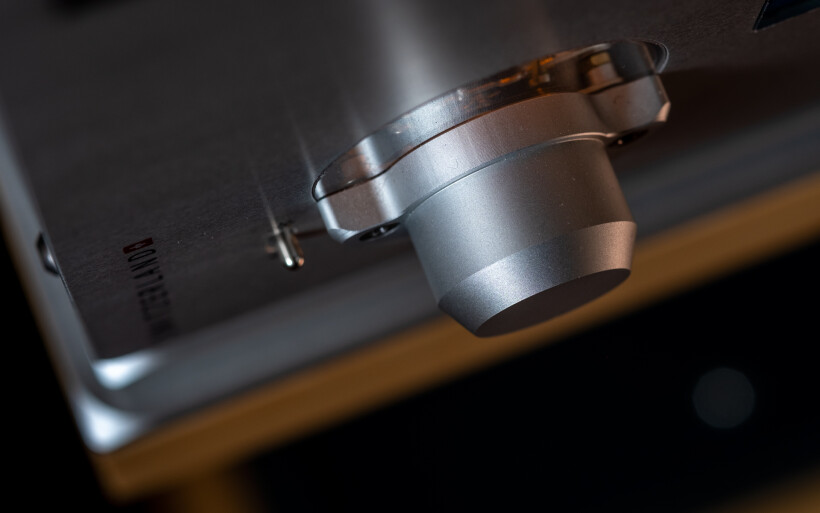 Most beefy class AB amps rely on linear power supplies, but this report’s case uses a SMPS/400VA toroid hybrid to boost dynamic headroom and behave mighty beyond what its specs tell us. Diode rectifiers are followed by Kemet’s six beefy decoupling caps (282’000µF in total) made for Nagra, and those by one discrete PFC (power-factor correction) module per channel. This PSU was designed to ideally superimpose current and voltage, be efficient, and act like a resistive barrier for the electric grid as if there was no contact between them. Limited losses and no dirt from AC mean squeaky clean current provision to internals downstream, and instant power transfer to output devices upon hitting a tough load. Speaking of, the gain stage is built upon a double current-transfer driver and two push/pull common-source lateral Exicon Mosfets per channel. These transistors well-known for speed and linearity bolt directly to Classic INT’s heat sink, and remain invisible below a transformer on its own thick plate. The input board powered by its own ultra-quiet linear PSU comprises of an op amp followed by a potentiometer, a buffer after it and finally a driver stage. The control PCB married to the front panel monitors all procedures, and the one surrounded by Kemet’s caps oversees standby/security duties. It’s time to put the lid back on.
Most beefy class AB amps rely on linear power supplies, but this report’s case uses a SMPS/400VA toroid hybrid to boost dynamic headroom and behave mighty beyond what its specs tell us. Diode rectifiers are followed by Kemet’s six beefy decoupling caps (282’000µF in total) made for Nagra, and those by one discrete PFC (power-factor correction) module per channel. This PSU was designed to ideally superimpose current and voltage, be efficient, and act like a resistive barrier for the electric grid as if there was no contact between them. Limited losses and no dirt from AC mean squeaky clean current provision to internals downstream, and instant power transfer to output devices upon hitting a tough load. Speaking of, the gain stage is built upon a double current-transfer driver and two push/pull common-source lateral Exicon Mosfets per channel. These transistors well-known for speed and linearity bolt directly to Classic INT’s heat sink, and remain invisible below a transformer on its own thick plate. The input board powered by its own ultra-quiet linear PSU comprises of an op amp followed by a potentiometer, a buffer after it and finally a driver stage. The control PCB married to the front panel monitors all procedures, and the one surrounded by Kemet’s caps oversees standby/security duties. It’s time to put the lid back on. And lastly, Nagra’s VFS (aka Vibration Free System) platform. It comprises of two separate brilliantly machined plates designed to stack. The larger one goes underneath, the smaller on top, and two bolts freely join them. Each plate’s underbelly features four round aluminium discs, and each this insert houses seven shock absorbers made from an unknown rubbery compound. The bottom base has them blue and the upper piece features orange cushions, but more importantly their color determines ranges of frequencies they absorb. This anti-vibration kit comes with four spikes finished with white rounded Delrin heads, and milled from ARCAp, a material described as non-magnetic non-ferrous copper-nickel-zinc alloy. I had to unscrew Classic INT’s stock decouplers and install those instead, and then put it on its VFS bed to end up with a mildly shaky soft result. Now let’s find out how all the above translates to sonics.
And lastly, Nagra’s VFS (aka Vibration Free System) platform. It comprises of two separate brilliantly machined plates designed to stack. The larger one goes underneath, the smaller on top, and two bolts freely join them. Each plate’s underbelly features four round aluminium discs, and each this insert houses seven shock absorbers made from an unknown rubbery compound. The bottom base has them blue and the upper piece features orange cushions, but more importantly their color determines ranges of frequencies they absorb. This anti-vibration kit comes with four spikes finished with white rounded Delrin heads, and milled from ARCAp, a material described as non-magnetic non-ferrous copper-nickel-zinc alloy. I had to unscrew Classic INT’s stock decouplers and install those instead, and then put it on its VFS bed to end up with a mildly shaky soft result. Now let’s find out how all the above translates to sonics.
Sound
Innuos Statement handled storage/transport, then a LampizatOr Pacific DAC (KR Audio T-100/Living Voice 300B + KR Audio 5U4G Ltd. Ed.) passed signal either to a Trilogy 915R/995R set or Nagra Classic INT. From there Boenicke S3 speaker cable connected either to sound|kaos Vox 3afw or Boenicke Audio W11 SE+ speakers. Interconnects used were Boenicke Audio IC3 CG and XLRs which I DIY-ed. All key hardware was powered by Boenicke Audio Power Gate distributor box plus its three captive M2 cords and two LessLoss C-MARCs. The USB chain included only one Mercury3.0 USB cable. A set of external LessLoss Firewall for Loudspeakers modules complimented both speaker sets, while a Fidelizer EtherStream was in-between my Linksys WRT160N router and Innuos Statement server. ISOL-8’s Prometheus PSU connected to the router and network switch.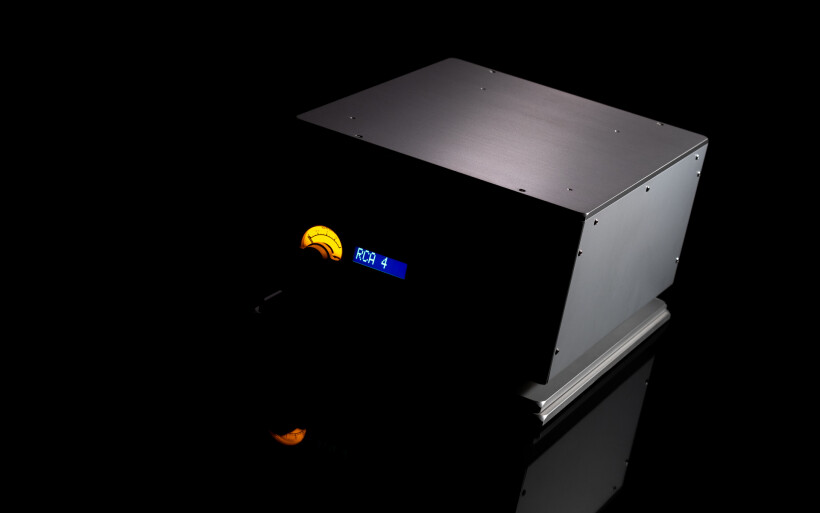 The plan how to approach Classic INT was very straightforward. It had to fight with my reference analog end, whilst Boenicke’s and sound|kaos’ speakers respectively considered as tough and easy loads allowed for mapping its performance in the broad spectrum. Swaps from the Swiss to Trilogy’s set and vice versa demanded level matching plus reconnecting RCA ICs and speaker cables. Once that critical part of scheduled listening auditions was done, a Bakoon AMP-13R stepped in just so I could confirm my previous findings and finish this story. Although stacking this petite integrated marvel against the far beefier Classic INT might seem unreasonable, their comparison wasn’t random. More on the subject in a bit. Nagra’s optional anti-vibration VFS base provided with this report’s loaner was on duty most of the time.
The plan how to approach Classic INT was very straightforward. It had to fight with my reference analog end, whilst Boenicke’s and sound|kaos’ speakers respectively considered as tough and easy loads allowed for mapping its performance in the broad spectrum. Swaps from the Swiss to Trilogy’s set and vice versa demanded level matching plus reconnecting RCA ICs and speaker cables. Once that critical part of scheduled listening auditions was done, a Bakoon AMP-13R stepped in just so I could confirm my previous findings and finish this story. Although stacking this petite integrated marvel against the far beefier Classic INT might seem unreasonable, their comparison wasn’t random. More on the subject in a bit. Nagra’s optional anti-vibration VFS base provided with this report’s loaner was on duty most of the time.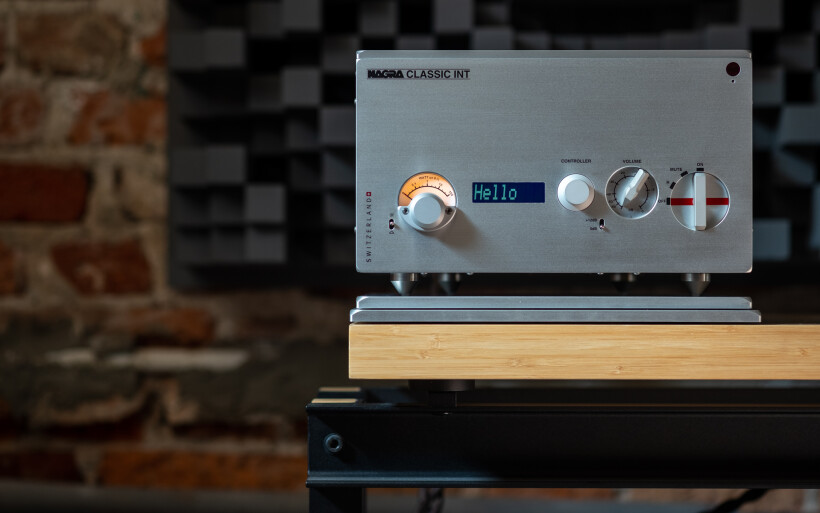 Upon asking whether I still remember the Swiss’ sound as heard at Marek’s place, I would say that I do to quite an extent. But was my palette at that time developed enough to fully appreciate this distinctively voiced deck, let alone grasping its makers’ sonic goals? That’s a big fat no. Now I understand that I was out of my depth, but luckily five years is time long enough to catch up and achieve a degree of readiness for challenges as complex as this report’s case. Being familiar with several designs based on lateral Exicon Mosfets also helps, and here Nagra Classic INT leaves no room for second guesses. It clearly sounds like a machine with these kosher parts inside, but also goes the extra mile on refinement, evenness and overall completeness, which is exactly what makes all the difference and nets superb results.
Upon asking whether I still remember the Swiss’ sound as heard at Marek’s place, I would say that I do to quite an extent. But was my palette at that time developed enough to fully appreciate this distinctively voiced deck, let alone grasping its makers’ sonic goals? That’s a big fat no. Now I understand that I was out of my depth, but luckily five years is time long enough to catch up and achieve a degree of readiness for challenges as complex as this report’s case. Being familiar with several designs based on lateral Exicon Mosfets also helps, and here Nagra Classic INT leaves no room for second guesses. It clearly sounds like a machine with these kosher parts inside, but also goes the extra mile on refinement, evenness and overall completeness, which is exactly what makes all the difference and nets superb results. Although I can’t say whether all amps with Exicon Mosfets sound the same, those I’ve auditioned were primarily geared for speed, lucidity, openness, grand spatial sizing, smoothness, immediacy, control, dynamic eagerness, and top resolution to effortlessly track even tiniest dust particles floating in air. This mixture of traits results in a particular sort of quickening that makes fabulously elastic lively direct sound tailored for i.e. complex music full of wicked dynamic passages. The emphasis here is thus obviously on high RPM and fast 0-60 times rather than casual right-lane cruising speeds in a comfy car with fluffy suspension. Nagra Classic INT clearly being the vivacious sporty type fits that profile to perfection, but also does so much more to not end up as a one trick pony.
Although I can’t say whether all amps with Exicon Mosfets sound the same, those I’ve auditioned were primarily geared for speed, lucidity, openness, grand spatial sizing, smoothness, immediacy, control, dynamic eagerness, and top resolution to effortlessly track even tiniest dust particles floating in air. This mixture of traits results in a particular sort of quickening that makes fabulously elastic lively direct sound tailored for i.e. complex music full of wicked dynamic passages. The emphasis here is thus obviously on high RPM and fast 0-60 times rather than casual right-lane cruising speeds in a comfy car with fluffy suspension. Nagra Classic INT clearly being the vivacious sporty type fits that profile to perfection, but also does so much more to not end up as a one trick pony.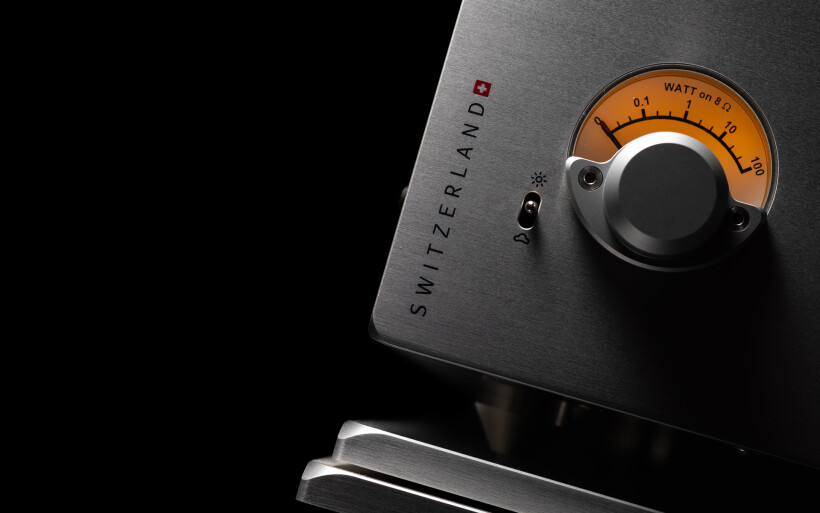 Sonic freshness and shine pushed too far can introduce dryness, skinniness, sensible grain and sharp outlines for lower notes on heft, internal filler, moisture and textural tissue. These drawbacks effectively make music nervous, hollow and piercing, and they strip it from sensuality, politeness, seductiveness and substance. Not today. Neither Classic INT pursued specific traits at a cost of other features, nor was it flashy or excessive in any way in particular. Instead it quickly introduced itself as evenly and thoroughly sorted on all fronts. Here I mean finessed tonal structures, generous color, roundness and a dash of tube-alike harmonic aesthetic brilliantly blended with agility, radiance, propulsion, openness and composure. The resulting full-care package was as equally relaxed, tactile and organic as it was surgically precise, enjoyably oxygenated and snappy. By walking this perfectly balanced walk the Swiss combined these mutually exclusive ingredients so expertly that performance free from any obvious weaknesses followed. Needless to say, such aural feasting doesn’t happen every other day. But more importantly, this rare behavior communicated top seasoning typical for the very best audio products I’ve heard. Bravo.
Sonic freshness and shine pushed too far can introduce dryness, skinniness, sensible grain and sharp outlines for lower notes on heft, internal filler, moisture and textural tissue. These drawbacks effectively make music nervous, hollow and piercing, and they strip it from sensuality, politeness, seductiveness and substance. Not today. Neither Classic INT pursued specific traits at a cost of other features, nor was it flashy or excessive in any way in particular. Instead it quickly introduced itself as evenly and thoroughly sorted on all fronts. Here I mean finessed tonal structures, generous color, roundness and a dash of tube-alike harmonic aesthetic brilliantly blended with agility, radiance, propulsion, openness and composure. The resulting full-care package was as equally relaxed, tactile and organic as it was surgically precise, enjoyably oxygenated and snappy. By walking this perfectly balanced walk the Swiss combined these mutually exclusive ingredients so expertly that performance free from any obvious weaknesses followed. Needless to say, such aural feasting doesn’t happen every other day. But more importantly, this rare behavior communicated top seasoning typical for the very best audio products I’ve heard. Bravo. Considering the above, Classic INT’s personality was simply too mature to enforce any overly pronounced sonic agendas and become situational in the process. If quick lean amps work rather well with dense syrupy speakers and vice versa, then today’s highly versatile subject would form a happily synergistic couple with every compliant load I could think of regardless of voicing. That’s the perk of not being extreme/biased. Moving on, I’m not sure whether the way the Swiss cast its pristine backdrop was due to its power supply, Exicon Mosfets, both those aspects or something else entirely most likely related to noise floor. With just the right music it rendered this space as pitch black and grain-free as they come even with sensitive revealing Vox 3afw speakers, and admittedly I adored the spooky sensation. That enveloping darkness significantly contributes to extracting smallest bits suspended in there, but the trick is in projecting them so easefully that they become casual additives to everything else; perfectly visible upon focusing on them, but supportive otherwise. That’s exactly what the Classic INT did and it was absolutely amazing on this count.
Considering the above, Classic INT’s personality was simply too mature to enforce any overly pronounced sonic agendas and become situational in the process. If quick lean amps work rather well with dense syrupy speakers and vice versa, then today’s highly versatile subject would form a happily synergistic couple with every compliant load I could think of regardless of voicing. That’s the perk of not being extreme/biased. Moving on, I’m not sure whether the way the Swiss cast its pristine backdrop was due to its power supply, Exicon Mosfets, both those aspects or something else entirely most likely related to noise floor. With just the right music it rendered this space as pitch black and grain-free as they come even with sensitive revealing Vox 3afw speakers, and admittedly I adored the spooky sensation. That enveloping darkness significantly contributes to extracting smallest bits suspended in there, but the trick is in projecting them so easefully that they become casual additives to everything else; perfectly visible upon focusing on them, but supportive otherwise. That’s exactly what the Classic INT did and it was absolutely amazing on this count.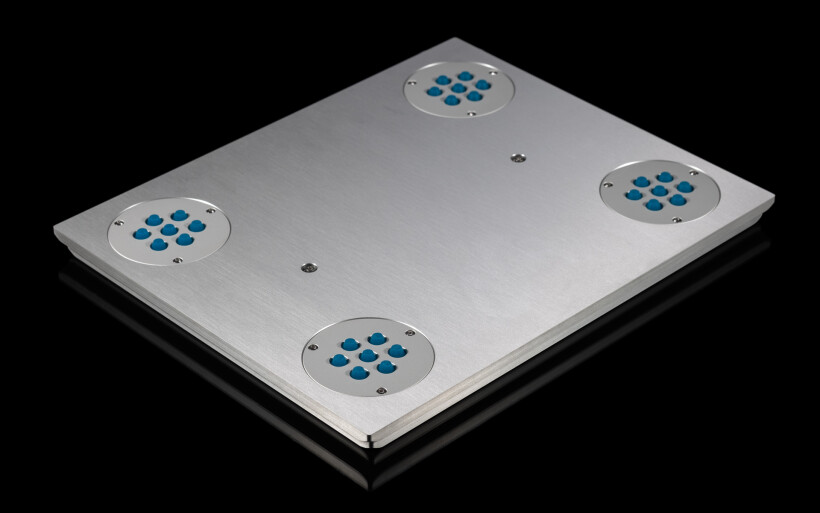 Several non-binding listening sessions with Classic INT were enough to understand it, but curiosity how it would stack against Trilogy’s far dearer set had to kick in at some point. Long story short, it wasn’t much of a surprise how this fight played out. My analog uses its great speed and openness as backbone for saturated colors, softness, density and somewhat round outlines with generously applied finely differentiated internal filler. It sounds utmost lively, agile and liberated, but also pleasantly dense, engaging and layered at the same time, so does everything just as Classic INT yet puts extra emphasis on tone, harmonic content and heft. Trilogy’s reference team also feels sensibly very powerful, present and fearless in a way. The ability to turn into a such daring fiend I consider its specialty in fact, but it would be wrong to assume that today’s amp was dwarfed in comparison and less bold. That wasn’t the case at all.
Several non-binding listening sessions with Classic INT were enough to understand it, but curiosity how it would stack against Trilogy’s far dearer set had to kick in at some point. Long story short, it wasn’t much of a surprise how this fight played out. My analog uses its great speed and openness as backbone for saturated colors, softness, density and somewhat round outlines with generously applied finely differentiated internal filler. It sounds utmost lively, agile and liberated, but also pleasantly dense, engaging and layered at the same time, so does everything just as Classic INT yet puts extra emphasis on tone, harmonic content and heft. Trilogy’s reference team also feels sensibly very powerful, present and fearless in a way. The ability to turn into a such daring fiend I consider its specialty in fact, but it would be wrong to assume that today’s amp was dwarfed in comparison and less bold. That wasn’t the case at all.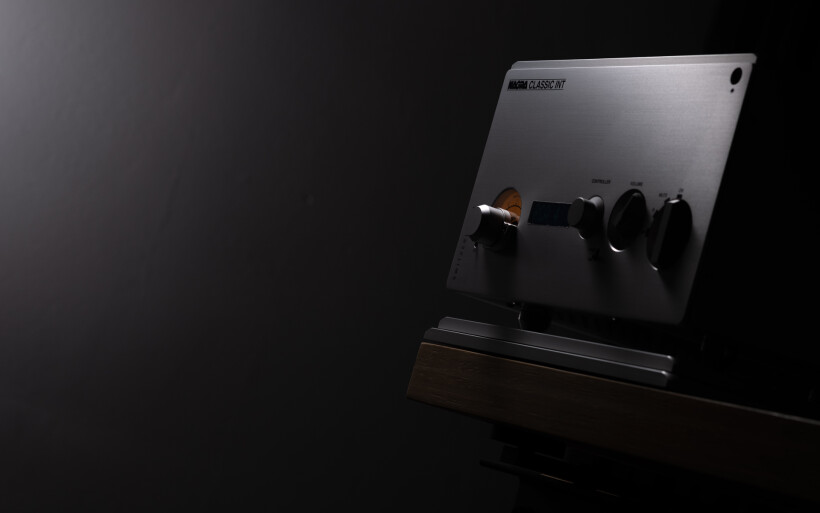 I imagine that at first many ears would take Classic INT as noticeably leaner and sportier versus Trilogy’s beefier spatially grander set, but several tracks later that observation would turn out rather simplified and not particularly accurate. The big picture was elsewhere. The former had its muscle tissue properly developed via fully flourished textural complexity and tonal sweetness instead of the usual suspects; density, roundness and warmth. It incorporated rarely used measures to produce delightfully intricate results which can take a while to grasp and appreciate. Trilogy’s 995R/915R team felt heavier, bloomier, a fair bit warmer and it portrayed weightier more voluptuous key sound sources for more colorful less transparent outcome closer to my ears. Think of it as a highly skilled drummer keen to once in a while show off in front of other band members. In that context Nagra’s product would be a legendary name for hire known for upping the game of any band that can afford it, and as such it fully adapts to whoever’s on the payroll and does nothing for itself. In the audiophile lingo this means that the Classic INT finely revealed the input of digital components within my setup, whilst Trilogy’s stack masked some of that feedback with its own inherently stronger aroma.
I imagine that at first many ears would take Classic INT as noticeably leaner and sportier versus Trilogy’s beefier spatially grander set, but several tracks later that observation would turn out rather simplified and not particularly accurate. The big picture was elsewhere. The former had its muscle tissue properly developed via fully flourished textural complexity and tonal sweetness instead of the usual suspects; density, roundness and warmth. It incorporated rarely used measures to produce delightfully intricate results which can take a while to grasp and appreciate. Trilogy’s 995R/915R team felt heavier, bloomier, a fair bit warmer and it portrayed weightier more voluptuous key sound sources for more colorful less transparent outcome closer to my ears. Think of it as a highly skilled drummer keen to once in a while show off in front of other band members. In that context Nagra’s product would be a legendary name for hire known for upping the game of any band that can afford it, and as such it fully adapts to whoever’s on the payroll and does nothing for itself. In the audiophile lingo this means that the Classic INT finely revealed the input of digital components within my setup, whilst Trilogy’s stack masked some of that feedback with its own inherently stronger aroma.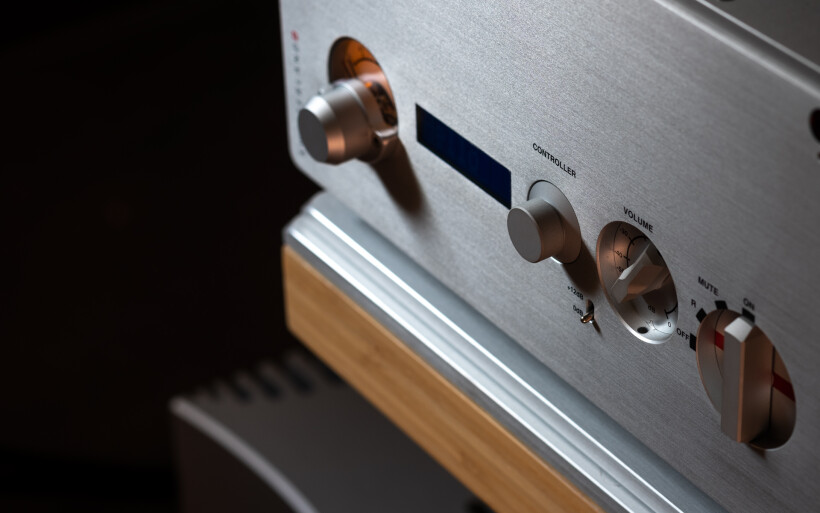 Although introductory impressions suggested otherwise, the Swiss wasn’t any smaller on spatial sizing. The closest instrumental outlines it projected a bit slimmer and further away from my ears than its opponent for extra points on air amount and accuracy, but both worked on roughly the same canvas width and depth wise. Trilogy’s harder pencil presses drew thicker frames with lesser space in-between for more picturesque and artistic presentation with both speaker models I had available. On quickness, control, immediacy and slamming potency there was a draw. Extra gravitas downstairs allowed the Brit landing sensibly chunkier blows, whereas Classic INT retaliated on high notes a touch weightier, finer, more shimmery and longer on decay. The former’s midrange was meatier against the latter’s more flexile, ripped and tonally honest approach. You get the idea.
Although introductory impressions suggested otherwise, the Swiss wasn’t any smaller on spatial sizing. The closest instrumental outlines it projected a bit slimmer and further away from my ears than its opponent for extra points on air amount and accuracy, but both worked on roughly the same canvas width and depth wise. Trilogy’s harder pencil presses drew thicker frames with lesser space in-between for more picturesque and artistic presentation with both speaker models I had available. On quickness, control, immediacy and slamming potency there was a draw. Extra gravitas downstairs allowed the Brit landing sensibly chunkier blows, whereas Classic INT retaliated on high notes a touch weightier, finer, more shimmery and longer on decay. The former’s midrange was meatier against the latter’s more flexile, ripped and tonally honest approach. You get the idea.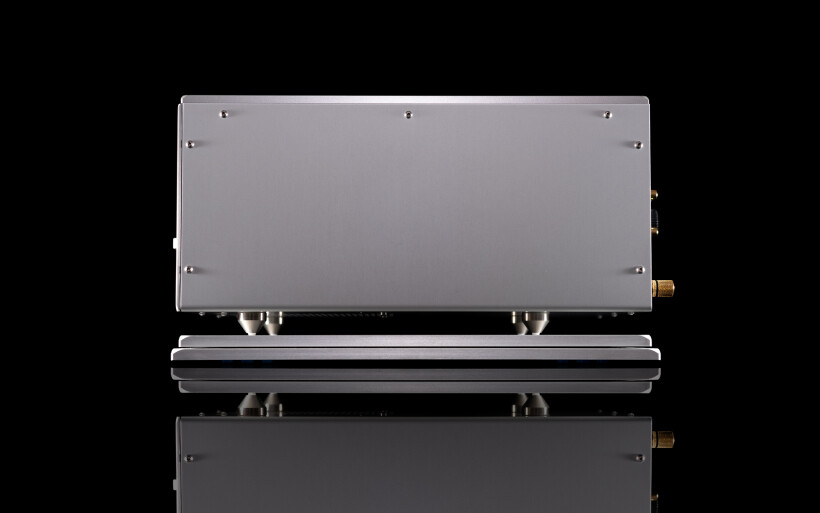 The key takeaway from the fight above was that Classic INT didn’t feel any small in comparison to two large monos and linestage worth about three times as much as a team. On counts related to overall might, willingness to handle most challenging dynamic passages without hiccups and simply acting big, Nagra’s integrated surpassed initial expectations. It knew well when exactly to become wildling and slam hard, just to one track later morph into a polite sensual specimen as exquisitely profiled as it was enchanting, lucid and emotionally persuasive. It offered top shelf articulation, finesse and insight no matter music on the menu. It was dense enough to keep most ears very happy, and infused with distinctive elegance and refinement I’ve heard only once before applied this generously in an integrated amp. Here I mean the little wonder Bakoon AMP-13R that never left my place past publishing its review, and was at my disposal during this assignment.
The key takeaway from the fight above was that Classic INT didn’t feel any small in comparison to two large monos and linestage worth about three times as much as a team. On counts related to overall might, willingness to handle most challenging dynamic passages without hiccups and simply acting big, Nagra’s integrated surpassed initial expectations. It knew well when exactly to become wildling and slam hard, just to one track later morph into a polite sensual specimen as exquisitely profiled as it was enchanting, lucid and emotionally persuasive. It offered top shelf articulation, finesse and insight no matter music on the menu. It was dense enough to keep most ears very happy, and infused with distinctive elegance and refinement I’ve heard only once before applied this generously in an integrated amp. Here I mean the little wonder Bakoon AMP-13R that never left my place past publishing its review, and was at my disposal during this assignment. Now I can finally confess that mere minutes into the introductory audition my curiosity about Classic INT took a sharp turn towards unconcealed admiration, and its undeniable similarity to Bakoon’s voicing was the reason. My fondness towards the latter had to be contained however, so prior to comparing them Trilogy’s hardware was used first. Classic INT’s fight with AMP-13R was brief and sound|kaos VOX 3awf was the only speaker set fit for both, but what I’d learnt along the road was very clear. Although different price tags and power outputs made these two amps distant relatives at best, on performance with this specific load they were pretty much twins. My ears detected multiple identical DNA strands, but no major disparity that would suggest one’s definite superiority over the other. If anything, Nagra’s sound was a tad beefier versus Bakoon’s slightly quicker more illuminated approach. I can’t say, perhaps in time something more firm to hold on to would eventually afloat, but that was of no importance given how self-explanatory the entire discovery was.
Now I can finally confess that mere minutes into the introductory audition my curiosity about Classic INT took a sharp turn towards unconcealed admiration, and its undeniable similarity to Bakoon’s voicing was the reason. My fondness towards the latter had to be contained however, so prior to comparing them Trilogy’s hardware was used first. Classic INT’s fight with AMP-13R was brief and sound|kaos VOX 3awf was the only speaker set fit for both, but what I’d learnt along the road was very clear. Although different price tags and power outputs made these two amps distant relatives at best, on performance with this specific load they were pretty much twins. My ears detected multiple identical DNA strands, but no major disparity that would suggest one’s definite superiority over the other. If anything, Nagra’s sound was a tad beefier versus Bakoon’s slightly quicker more illuminated approach. I can’t say, perhaps in time something more firm to hold on to would eventually afloat, but that was of no importance given how self-explanatory the entire discovery was.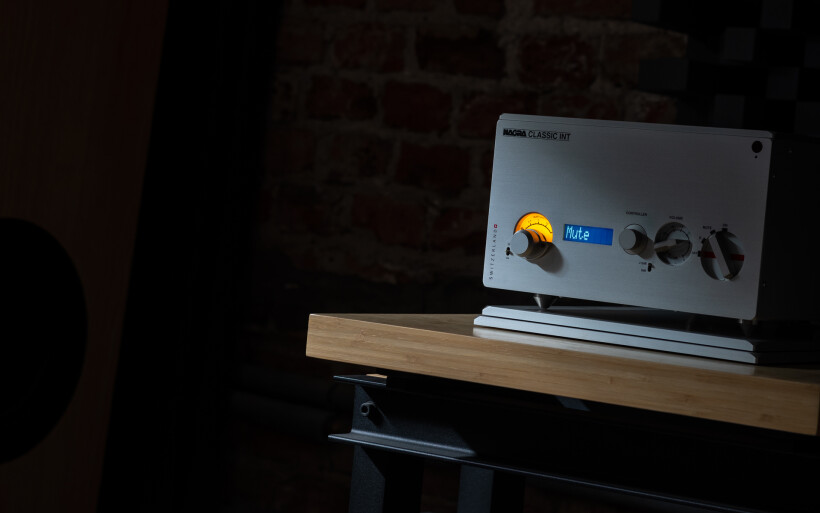 And lastly, it was time to investigate Classic INT’s behavior with and without its makers’ VFS platform underneath. Such non-mandatory anti-vibration accessories are known for applying finishing touches to a product’s core character rather than changing it. The Swiss base followed suit by reinforcing control over bass and making it more firm, injecting extra substance across the board, boosting colors and further increasing background blackness. Put shortly, Classic INT on top of its VFS companion sounded like a posher version of itself and the procedure was free from any downsides as expected, but the question about associated gains versus expenses remained. The on-site description lists Nagra’s tube products as the most susceptible to its base and that’s understandable, so fairly mild efficacy Classic INT on top wasn’t a surprise. The VFS’ contribution was audible, easily traceable and meaningful however, which was good enough for me. Besides, Nagra’s amp without this two-level throne looked incomplete, so given visual attractiveness upon stacking them I’d gladly pay for the latter even if it were just a decorative piece and nothing else.
And lastly, it was time to investigate Classic INT’s behavior with and without its makers’ VFS platform underneath. Such non-mandatory anti-vibration accessories are known for applying finishing touches to a product’s core character rather than changing it. The Swiss base followed suit by reinforcing control over bass and making it more firm, injecting extra substance across the board, boosting colors and further increasing background blackness. Put shortly, Classic INT on top of its VFS companion sounded like a posher version of itself and the procedure was free from any downsides as expected, but the question about associated gains versus expenses remained. The on-site description lists Nagra’s tube products as the most susceptible to its base and that’s understandable, so fairly mild efficacy Classic INT on top wasn’t a surprise. The VFS’ contribution was audible, easily traceable and meaningful however, which was good enough for me. Besides, Nagra’s amp without this two-level throne looked incomplete, so given visual attractiveness upon stacking them I’d gladly pay for the latter even if it were just a decorative piece and nothing else.
Summary
Although my prior exposure to Nagra’s hardware was helpful in penning this tale, I truly couldn’t foresee its main plot twist. Classic INT’s performance way up there with the most accomplished amp in my roster effectively turned it into the very best high-powered integrated specimen I’ve heard to date. Since its victorious kind wears only red, this story has to finish accordingly.
Nagra’s designs are well known for their iconic timeless appearance, small form factor, circuit cleverness and quite fanatical attention to details, and Classic INT fits that description to a tee. It features useful i/o, outputs enough power to comfortably accommodate tough companions, and is enjoyably obedient and pleasant to use. On premium luxurious feel and assembly however it’s a masterpiece by my standards, and along with experiencing it at home comes the understanding where all the money went. Of course that nasty preconception about bigger amps sounding better has to be cast aside first. Classic INT is as equally mighty as it is ambitious, just deliberately dressed in a compact gorgeously executed package. If a devil disguised in an inconspicuous outfit is still a devil, then today’s Swiss clearly doesn’t need Prada to be one.
If for some odd reason I had to now reduce my setup’s analog end to an integrated amp, I wouldn’t pursue anything that isn’t Nagra Classic INT. The way how this unapologetically different stunner behaved, looked and sounded like, well, perfectly resonated with my taste and sensitivity. I thoroughly enjoyed every single minute I was fortunate to spend with it, my tip of the hat to its makers and ‘til next time!
Associated Equipment:
- Amplifier: Trilogy 995R
- DAC: LampizatOr Pacific (KR Audio T-100 / Living Voice 300B + KR Audio 5U4G Ltd. Ed.)
- Speakers: Boenicke Audio W11 SE+, sound|kaos Vox 3afw
- Transport: Innuos Statement
- Preamplifier: Trilogy 915R
- Speaker cables: Boenicke Audio S3, LessLoss C-MARC
- Speaker signal conditioning: LessLoss Firewall for Loudspeakers
- Interconnects: Boenicke Audio IC3 CG
- Power components: Gigawatt PC-3 SE EVO+/LC-3 EVO, LessLoss C-MARC, Boenicke Audio Power Gate, iFi audio PowerStation, ISOL-8 Prometheus
- USB components: iFi audio Mercury3.0
- Rack: Franc Audio Accesories Wood Block Rack
- Network: Fidelizer EtherStream, Linksys WRT160N
- Music: NativeDSD
Retail prices of reviewed components in EU (incl. tax):
- Nagra Classic INT: €17’900
- Nagra VFS: €1’850
Manufacturer: Audio Technology Switzerland





























